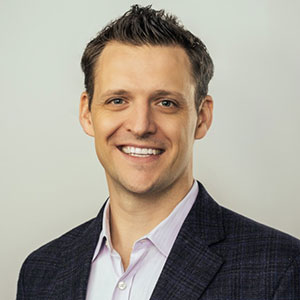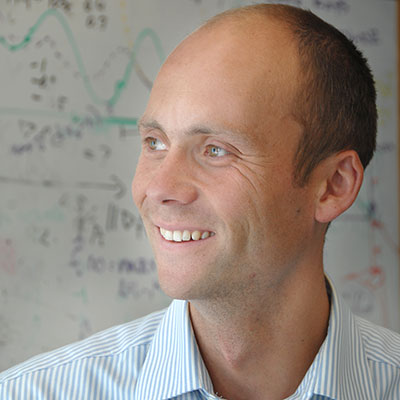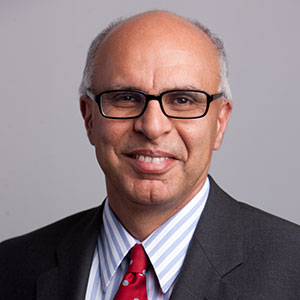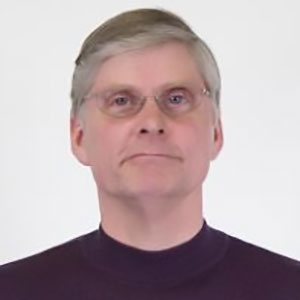Keynotes
IDA and the FFRDC Research Ecosystem
General Norton Schwartz
President, Institute for Defense Analyses
The security environment has shifted and evolved since the establishment of the Department of Defense, Joint Staff and Combatant Command structure after the conclusion of World War II in 1947. The establishment of the structure for joint warfighting provided new opportunities for analytic support to the newly formed department of defense. The Institute for Defense Analyses (IDA) was created in 1956 to provide analyses in support of the new department. IDA’s mission is to answer the most challenging U.S. security and science policy questions with objective analysis leveraging extraordinary scientific, technical, and analytic expertise. As a manager of three Federally Funded Research and Development Centers (FFRDC), IDA is part of a network of analytic agencies funded by the Department of Defense, Department of Energy, Homeland Security, National Science Foundation, and other executive agencies to support the variety security issues faced by the United States. This network of FFRDCs provide a vast array of opportunity to perform research and analyses in support of the United States. We will discuss these opportunities and some of the recent analyses performed by our three FFRDCs, IDA Systems and Analyses Center, IDA Science and Technology Policy Institute and the IDA Center for Communications and Computing. We will highlight research and career opportunities and research areas with the potential for significant impact.

Cybersecurity for Planes, Trains, and Tanks
Josh Lospinoso
CEO, Shift5
DoD Weapon Systems are choc-full of digital components. They are more networked and software dependent than ever before, but generally these systems were never designed with cybersecurity in mind. In recent operational testing, the DoD routinely found mission-critical cyber vulnerabilities. Disconcertingly simple tools and techniques were often enough for penetration testers to take control of weapon systems. Fortunately, the DoD is beginning to take weapon system cybersecurity seriously, but we have a long way to go as a cybersecurity community in developing solutions to address this dangerous new threat frontier. Additionally, civilian transportation assets like commercial aircraft, maritime vessels, freight/passenger rail, satellites, and road vehicles have corollary cybersecurity issues. As critical infrastructure, these systems are simultaneously more important and more vulnerable than ever before. In this talk, Josh will discuss how we got here, the magnitude of the problem, and what’s required to begin paying the debt.

Robustness and Conservativeness in Statistical Learning
Johannes O. Royset
Professor of Operations Research, Naval Postgraduate School
Despite impressive achievements over the last decade, statistical learning remains prone to errors when the training data is biased, corrupted, or mislabeled. Dr. Royset will discuss troubling situations from computer vision as well as military operations research and review approaches to enhance robustness and conservativeness. In particular, he proposes superquantile regression as an alternative to least-squares regression when the focus is on estimating distributional tail behavior. Computationally efficient approximations achieve robust training against adversarial interference. Diametrical risk minimization improves on classical empirical risk minimization by accounting for worst-case empirical risks within neighborhoods in a parameter space. He illustrates the empirical performance of the various approaches through examples such as training of neural networks using corrupted labels, and also discuss the theoretical performance of diametrical risk minimization under challenging non-convex, non-Lipschitz loss functions.

Stochastic Modeling Challenges for Problems in the Security Domain
Rajan Batta
SUNY Distinguished Professor and Associate Dean for Faculty Affairs and Diversity, School of Engineering and Applied Sciences, University at Buffalo
The security domain provides excellent problems for the operation research community. Security problems that have a stochastic component are particularly challenging to model and analyze successfully. In this keynote, Dr. Batta will discuss several security problems that he worked on with colleagues and graduate students that have a stochastic modeling component.
These include topics such as:
-
- sensor deployment to detect movement of suspicious objects,
- deployment and redeployment of an ad hoc sensor network with unreliable communication links,
- strategic deployment of response units with uncertain future demands,
- search for emerging objects in an area of interest, with and without camouflaging capabilities, and
- strategies for infiltration into enemy territory.

National Science Foundation (NSF) Program Managers Panel
Yueyue Fan
Professor, University of California, Davis
Program Manager, National Science Foundation
Dr. Fan will present the Civil Infrastructure Systems (CIS) program that supports fundamental and innovative research in the design, operation and management of civil infrastructure and contributes to creating smart, sustainable and resilient communities at local, national and international scales. The CIS program focuses on civil infrastructure as a system in which interactions between spatially- and functionally- distributed components and intersystem connections exist, and is interested in every critical civil infrastructure system, including transportation, power, water, pipelines, etc. The research themes addressing novel system and service design, system integration, big data analytics, and socio-technological-infrastructure connections and the research contributions—theoretical, scientific, mathematical, or computational—will be discussed.
NSF Program: Civil Infrastructure Systems (CIS)
The Civil Infrastructure Systems (CIS) program supports fundamental and innovative research in the design, operation and management of civil infrastructure that contributes to creating smart, sustainable and resilient communities at local, national and international scales. This program focuses on civil infrastructure as a system in which interactions between spatially- and functionally- distributed components and intersystem connections exist. All critical civil infrastructure systems are of interest, including transportation, power, water, pipelines and others.
The CIS program encourages potentially disruptive ideas that will open new frontiers and significantly broaden and transform relevant research communities. The program particularly welcomes research that addresses novel system and service design, system integration, big data analytics, and socio-technological-infrastructure connections. The program values diverse theoretical, scientific, mathematical, or computational contributions from a broad set of disciplines.
While component-level, subject-matter knowledge may be crucial in many research efforts, the program does not support research with a primary contribution pertaining to individual infrastructure components such as materials, sensor technology, extreme event analysis, human factors, climate modeling, structural, geotechnical, hydrologic or environmental engineering.
Also: Cyber Physical Systems (CPS) and Smart and Connected Communities.

Paul Huth
Program Officer, National Science Foundation
Dr. Huth will present the Security and Preparedness (SAP) Program that supports basic scientific research advancing knowledge and understanding of issues broadly related to global and national security. Funded research should be theoretically motivated, conceptually precise, methodologically rigorous, and empirically oriented and could for example involve international relations, global and national security, human security, political violence, state stability, conflict processes, regime transition, international and comparative political economy, and peace science. Dr. Huth will also discuss other NSF programs that SAP co-reviews with on a regular basis.
NSF Program: Security and Preparedness (SAP)
The Security and Preparedness (SAP) Program supports basic scientific research that advances knowledge and understanding of issues broadly related to global and national security. Research proposals are evaluated on the criteria of intellectual merit and broader impacts; the proposed projects are expected to be theoretically motivated, conceptually precise, methodologically rigorous, and empirically oriented. Substantive areas include (but are not limited to) international relations, global and national security, human security, political violence, state stability, conflict processes, regime transition, international and comparative political economy, and peace science. Moreover, the Program supports research experiences for undergraduate students and infrastructural activities, including methodological innovations. The Program does not fund applied research. In addition, we encourage you to examine the websites for the National Science Foundation’s Accountable Institutions and Behavior (AIB) and Law and Science (LS) programs.
Besides the Security and Preparedness Program, Dr. Huth will also discuss other NSF programs that SAP co-reviews with on a regular basis.

Daan Liang
Program Director for Human, Disaster, and Built Environment (HDBE), National Science Foundation
Dr. Liang will present the Humans, Disasters, and the Built Environment (HDBE) program that supports fundamental, multidisciplinary research on the interactions between humans and the built environment within and among communities exposed to natural, technological and other types of hazards and disasters. The HDBE program seeks research that integrates ongoing and emerging changes in three interwoven elements of a community: its population, its built environment (critical infrastructures, physical and virtual spaces, and buildings and related structures) and the hazards and disasters to which it is exposed. The HDBE program seeks research that advances theories, methods and data within and across diverse disciplines, whether in engineering, the social sciences, computing or other relevant fields. Research funded by the HDBE program should inform how communities can cultivate and engage a broad range of physical, social and other resources to ensure improved quality of life for their inhabitants.
NSF Program: Humans, Disasters, and the Built Environment
The HDBE program supports fundamental, multidisciplinary research on the interactions between humans and the built environment within and among communities exposed to natural, technological and other types of hazards and disasters. The program’s context is provided by ongoing and emerging changes in three interwoven elements of a community: its population, its built environment (critical infrastructures, physical and virtual spaces, and buildings and related structures) and the hazards and disasters to which it is exposed. The HDBE program seeks research that integrates these elements and that can contribute to theories that hold over a broad range of scales and conditions. Examples include but are not limited to unified frameworks and theoretical models that encompass non-hazard to extreme hazard and disaster conditions, theoretical and empirical studies that consider how interactions between a community’s population and its built environment may suppress or amplify hazard exposure or its effects, and studies that seek to inform scholarship through the development of shared data and related resources. In these and other areas funded through the HDBE program, research that challenges conventional wisdom on the interactions among humans, the built environment and hazards and disasters is particularly encouraged. Given the richness of the phenomena under study, the HDBE program seeks research that advances theories, methods and data within and across diverse disciplines, whether in engineering, the social sciences, computing or other relevant fields. Ultimately, research funded through this program is expected to inform how communities can cultivate and engage a broad range of physical, social and other resources to ensure improved quality of life for their inhabitants.


